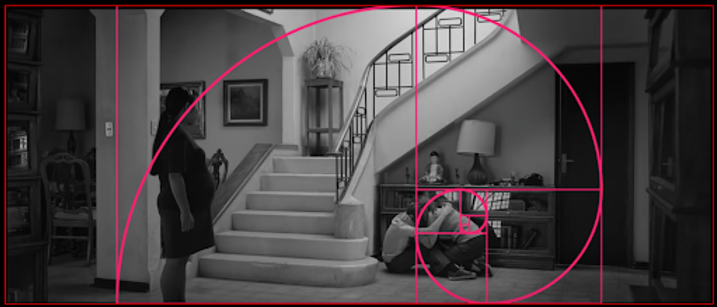Introduction
You must know how to capture and guide your audience’s attention. While post-production offers various tools, it’s the decisions made in cinematography—particularly in framing and composition—that ultimately dictate where your audience’s eyes will go. These elements form the backbone of every shot, shaping how viewers engage with the scene, feel the emotions, and understand the story being told. Whether you're just beginning your filmmaking journey or looking to sharpen your craft, mastering the art of framing and composition is crucial.
In this guide, we’ll explore the fundamentals of framing and composition, essential techniques, and how you can use them creatively to elevate your storytelling.
What Is Framing in Cinematography?
Framing refers to the way subjects and objects are positioned within the boundaries of the camera’s viewfinder or screen. Essentially, it's how you "frame" what the audience sees. The frame is a visual boundary that dictates what is and isn’t included in the shot, creating context and emphasizing specific elements.
Key Elements of Framing
Aspect Ratio

The aspect ratio of your frame defines its dimensions, commonly 16:9 for widescreen or 4:3 for traditional formats. The aspect ratio impacts how you place subjects within the frame and can influence how the audience experiences the story.
2. Rule of Thirds

One of the simplest yet most effective framing techniques is the rule of thirds. The frame is divided into nine equal parts by two horizontal and two vertical lines. Placing key elements (like a character’s eyes or a focal object) along these lines or intersections makes the composition more balanced and visually engaging.
3. Depth of Field

The depth of field refers to the range of focus in the frame. A shallow depth of field (with a blurred background) draws attention to a subject, while a deep depth of field keeps more elements in focus, offering context or showing the environment.
4. Headroom and Leading Room

Proper headroom ensures that there is an appropriate amount of space above a subject's head, preventing the shot from feeling too tight. Leading room, on the other hand, refers to the space in front of a moving subject, allowing for the natural flow of motion and attention.
What Is Composition in Cinematography?
Composition refers to how visual elements are arranged within the frame. It’s not just about where things are placed, but how they interact with each other to create meaning, mood, and tension. Good composition guides the viewer’s eye through the shot and enhances the storytelling.
Core Principles of Composition
Balance and Symmetry A well-balanced composition ensures that the frame doesn’t feel too heavy on one side. Symmetry (where the frame is evenly balanced on both sides) can evoke feelings of harmony, while asymmetry can create tension and dynamic interest.

Leading Lines Leading lines are lines within the shot (such as roads, bridges, or even the direction of a character’s gaze) that guide the viewer's eye to a focal point. These lines help create depth, perspective, and focus.

Foreground, Middleground, and Background Including elements in the foreground, middleground, and background adds depth to the scene. This creates a layered effect, making the shot feel more dynamic and immersive.

Framing within the Frame Using natural or man-made elements (like doorways, windows, or arches) to create a "frame within the frame" draws attention to a subject and adds depth. This technique can isolate a character, highlight a specific area of the frame, or emphasize the importance of a moment.

Practical Techniques to Enhance Framing and Composition
Use the Golden Ratio The Golden Ratio, also called the Fibonacci Spiral, is a more advanced compositional tool that creates a naturally pleasing aesthetic. It’s similar to the rule of thirds but places points of interest in a more mathematically precise location within the frame. It’s often used in classic films to create beautiful, harmonious compositions.

Apply Negative Space Negative space refers to the empty or open areas around the subject of your shot. It can be used effectively to create a sense of isolation, emphasize a subject’s solitude, or provide breathing room in a crowded composition.

Master the Close-Up and the Wide Shot Close-ups focus on details, emotions, and intimacy, while wide shots capture environments, relationships, and the broader context. Knowing when to use each type of shot can enhance the impact of a scene and influence how the audience interprets the story.

How to Apply Framing and Composition Creatively
Framing and composition go beyond just the technical aspects—they’re storytelling tools.
Here are some creative ways you can use framing and composition:
Convey Power Dynamics Different camera angles and framing techniques can be used to show power relationships between characters. A low angle looking up at a subject can make them appear more dominant, while a high angle can make a character seem small or vulnerable.
Symbolism through Composition Objects, shapes, and their arrangement in the frame can carry symbolic meaning. For example, a character trapped within multiple frames (like a window or door) can suggest they’re confined or restricted.
Directing the Audience's Attention Use depth of field, lighting, and composition to subtly direct where the audience should focus. For instance, you can use a shallow depth of field to blur out irrelevant details and highlight the main subject.
Balance Chaos and Order You can evoke different emotions by playing with balanced and chaotic compositions. A perfectly symmetrical frame might suggest order or control, while a frame filled with clutter or erratic elements could indicate chaos or disarray.
Mastering framing and composition in cinematography requires both technical understanding and creative experimentation. By learning the rules and then finding your own ways to break or bend them, you can craft shots that not only look beautiful but also tell compelling stories.
Use this guide as a starting point to explore how to create impactful visuals in your own films. Keep practicing, experimenting, and analyzing great works of cinema to sharpen your skills and develop your unique visual style.

Comments